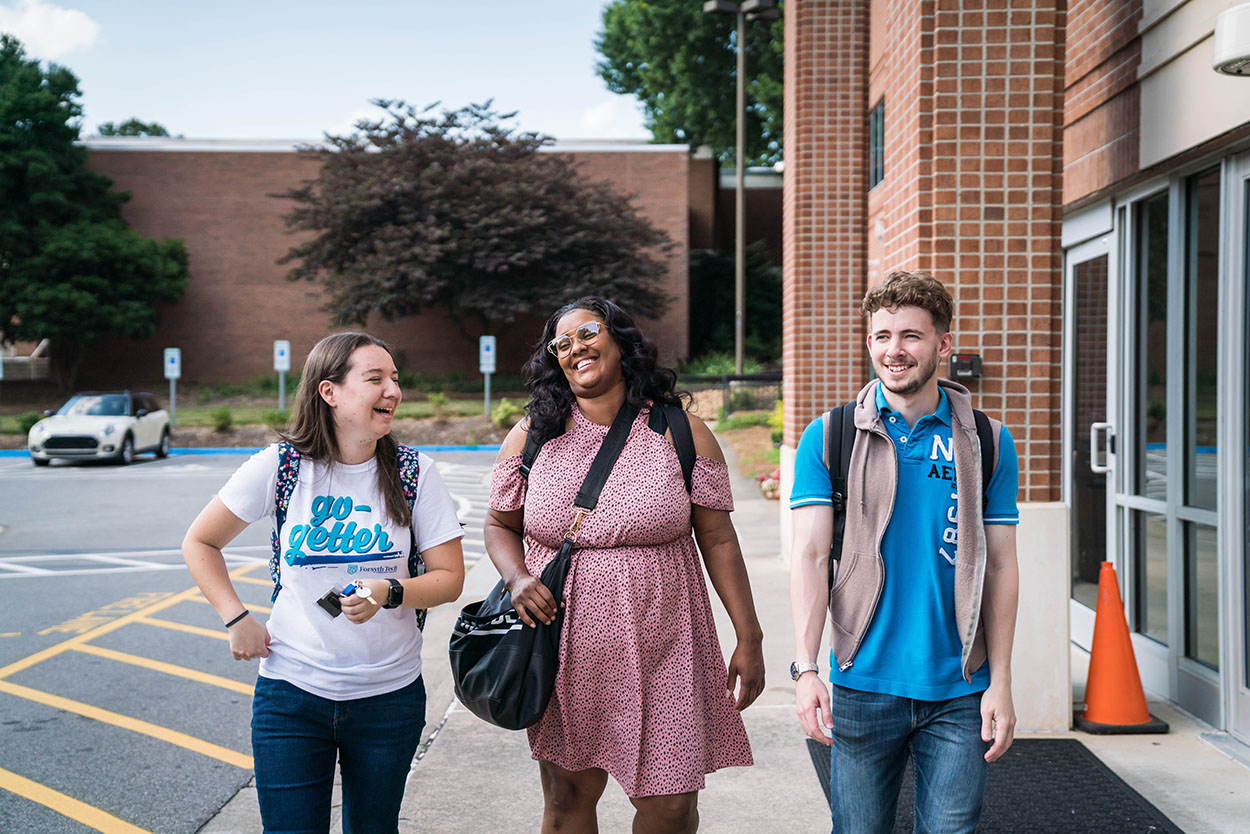Forsyth Tech News
Forsyth Tech Achieves Historic Enrollment & Graduation Gains

Forsyth Tech News

Forsyth Technical Community College announced today that fall 2025 enrollment reached 9,733 students, the college’s highest headcount since 2013. At the same time, Forsyth Tech’s overall three-year graduation rate more than doubled, rising from 21% (for students who entered in fall 2016) to 43% (for students who entered in fall 2022. Importantly, this progress extends across student groups. The graduation rate for underrepresented minority students has sharply improved to 42%, a 27-percentage point increase since fall 2016. These outcomes directly reflect Forsyth Tech’s strategic focus on student success under its Vision 2025 plan, which concludes this year.
This growth reflects a multi-year upswing. In fall 2019, Forsyth Tech’s enrollment was 7,695 and in the fall of 2025, enrollment is currently 9,886. Programs in high-demand fields – from advanced manufacturing and health sciences to business and technology – all saw gains.
These milestones come as the college concludes its Vision 2025 strategic plan. Beginning in 2020, Vision 2025 set ambitious goals to: improve completion, remove achievement gaps, advance new teaching and learning pedagogies and flexible learning models, and ensure graduates are job-ready for high-demand family-sustaining wage careers. Forsyth Tech’s strategy was to reimagine the student experience, provide support systems that helped students overcome academic and “life happens” barriers, and connect learning to skills that businesses in our region and state need today and for jobs in the future.
The college simplified and clearly defined program pathways, embedded career exploration from day one, implemented intensive outreach and recruitment efforts, and established early alerts so students get help before they fall behind. With support from the Forsyth Tech Foundation, Forsyth Tech Cares, an award-winning holistic support network of resources, provides emergency aid, food and housing assistance, childcare support, help with transportation, and expanded mental health counseling so life challenges don’t derail progress.
Additionally, the college connected careers to learning with employer-informed curricula, apprenticeships and other work-based learning programs, and growth in high-demand programs like advanced manufacturing, health sciences, public safety, business, and information technology. Finally, the college continued to prioritize excellence in teaching through ongoing professional development for faculty and staff and using disaggregated data to focus resources where they make the biggest difference for students.
“This is what happens when a college focuses collectively on economic mobility and workforce development, putting students first on purpose,” said Dr. Janet N. Spriggs, president of Forsyth Tech. “We simplified academic pathways, strengthened advising, and removed real-life barriers, so more students can complete and step into quality jobs. Our communities win when students win.”
When President Spriggs took office in 2019, Forsyth Tech’s overall completion rate fell well below the 34.9% national average for community colleges as reported by the National Center for Education Statistics. Nationally, only about 43% of students at two-year colleges finish a credential in six years, largely because most community college students are not traditional, full-time college students. Most two-year students are not focused solely on earning their degrees because they work either part-time or full-time and many are student parents, balancing the demands of work and life while enrolled. This fall, only about 41% of Forsyth Tech’s students are full-time.
Against that backdrop, Forsyth Tech’s jump to a 43% graduation rate without achievement gaps, is extraordinary, and students at the college are now higher completing at levels higher than the national average. Gains are visible across programs, from nursing and construction to information technology and business, and reflect a college wide lift with coordinated efforts by all faculty and staff. Actions such as offering year-round enrollment support, redesigning programs to fit into shorter eight-week terms, and keeping services open during peak periods ensured students could register, navigate financial aid, and stay on track. As one student ambassador put it, “I never thought I’d finish school, but Forsyth Tech helped me step by step.”
The combined effect is a learning environment at Forsyth Tech that truly represents the college’s commitment to be a place of promise for all students, from all backgrounds, and a place where everyone thrives. Forsyth Tech’s success in narrowing achievement gaps has drawn national attention: education media have featured the college as a model of how to improve retention and transfer at two-year schools.
As Forsyth Tech concludes Vision 2025, the results speak for themselves. The college not only met, but in many cases exceeded the strategic plan’s targets. Its credential completion and transfer numbers are at the highest levels ever recorded. And the stark educational disparities of 2019 have narrowed significantly.
“We set bold goals in our strategic plan, and our faculty and staff delivered,” Dr. Spriggs said. “Forsyth Tech is now celebrating 65 years of a legacy of impact, and we are looking to the future to see how we can continue to help our community dream, learn and thrive.” The college will build on these results as it advances its next strategic chapter focused on career-connected pathways, workforce development to meet 21st century workforce needs, and advancing economic mobility for Forsyth and Stokes counties and the Piedmont Triad region.